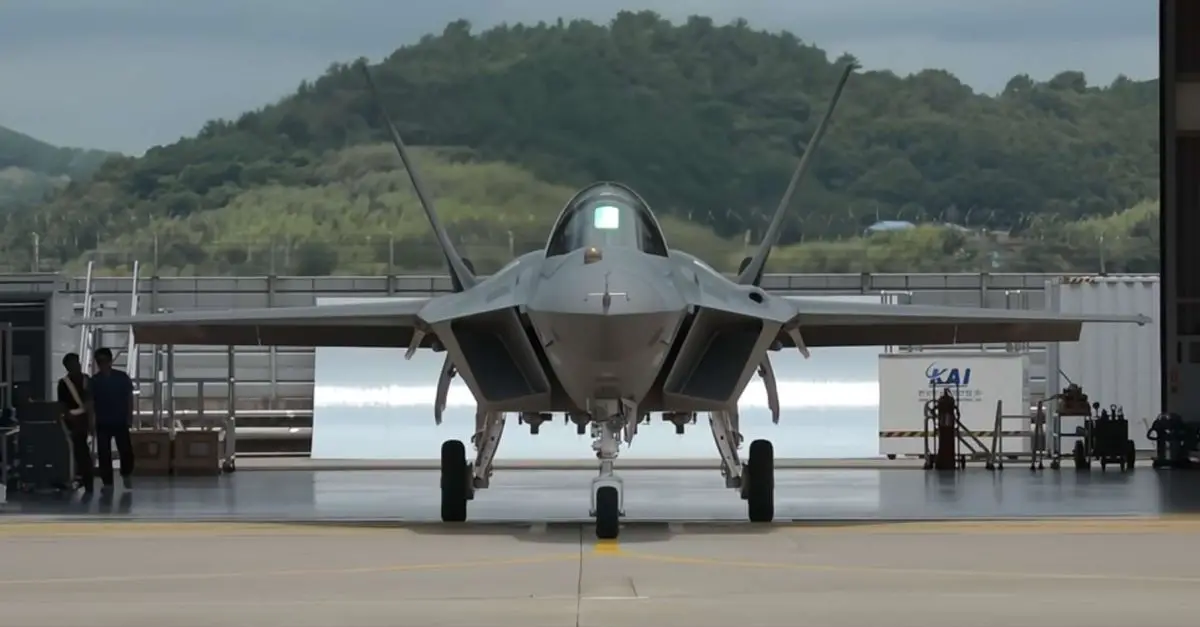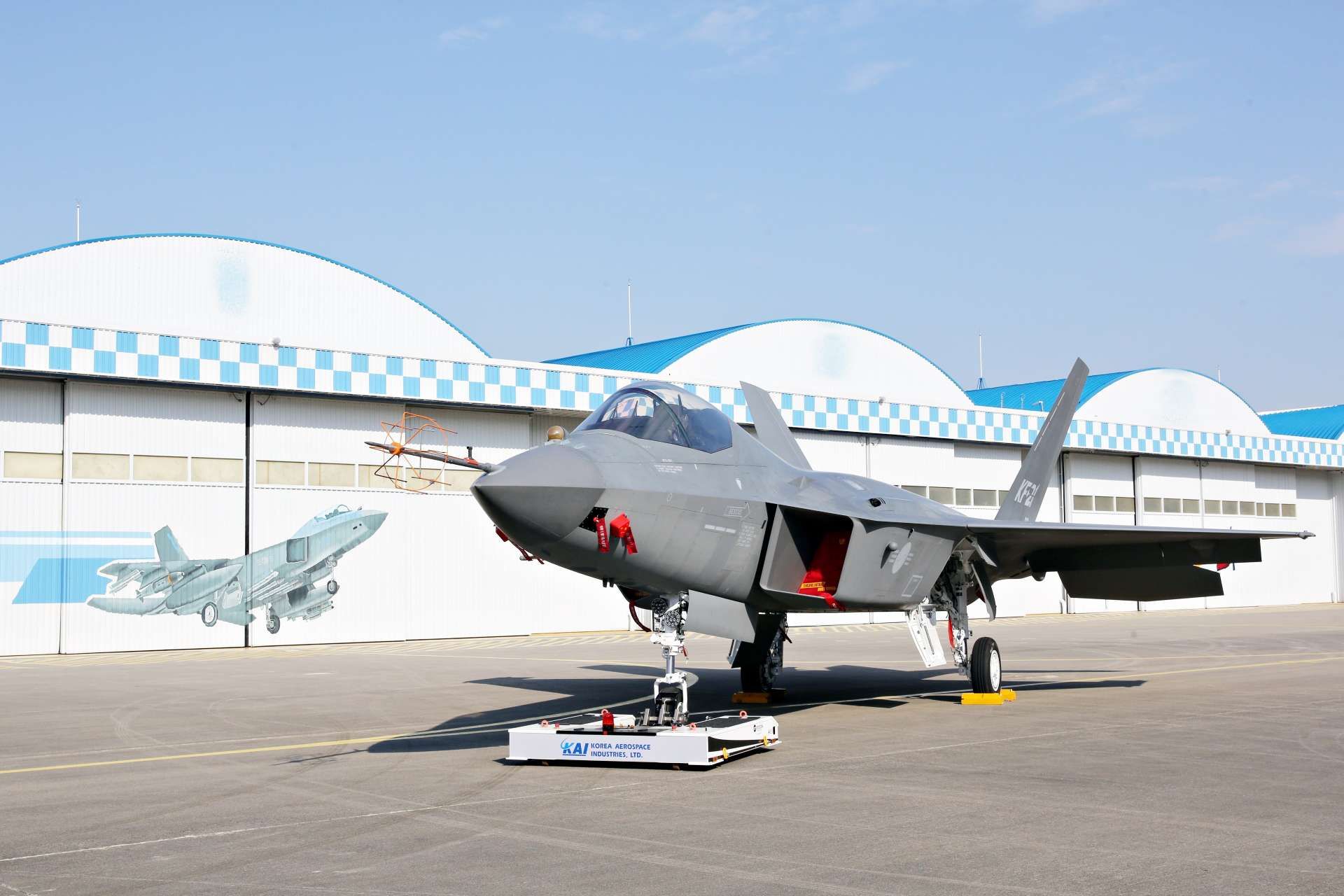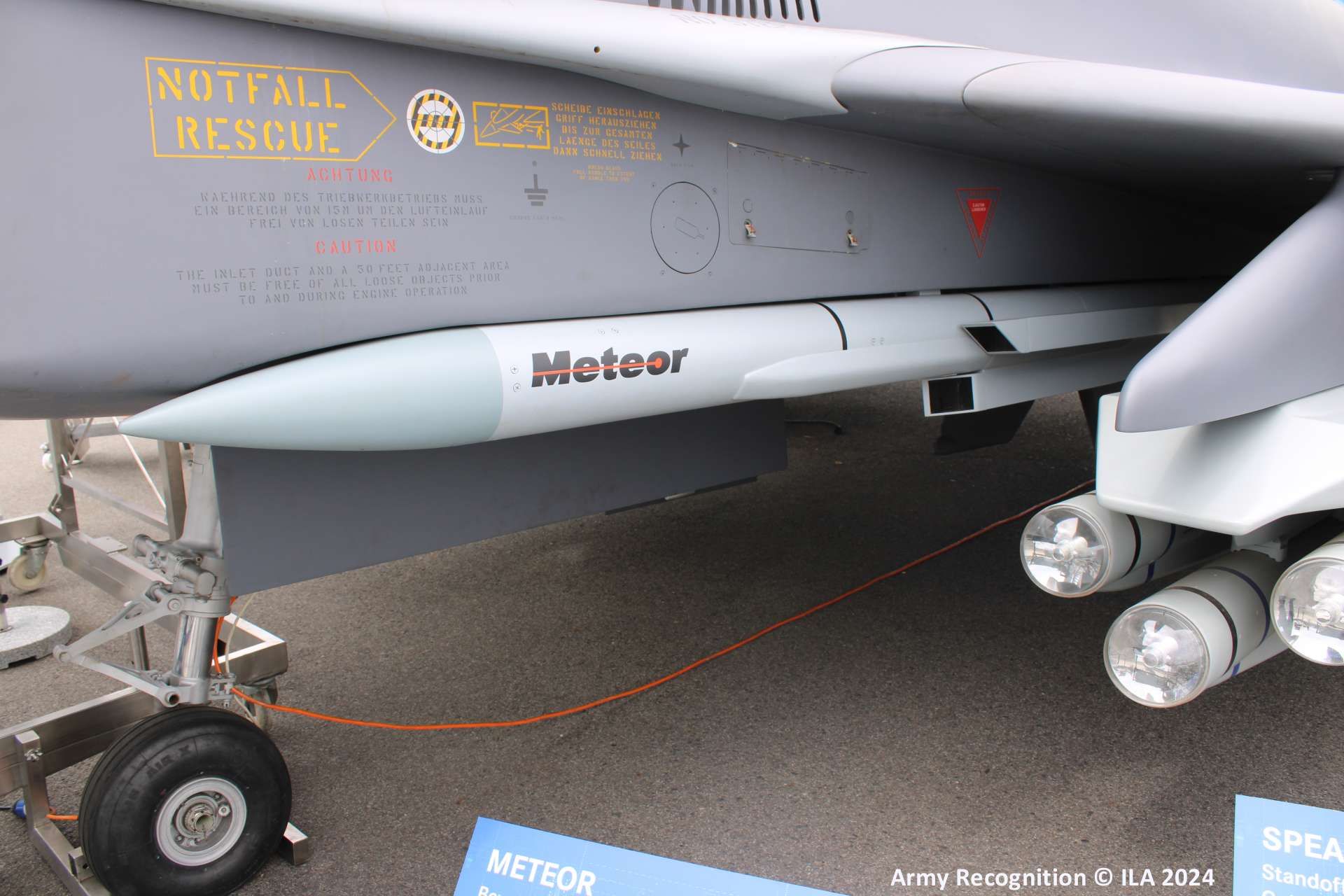Breaking News
Will South Korea's KF-21 Boromae become the Philippines' next fighter jet?.
As reported by FlightGlobal on July 30, 2024, the South Korean KF-21 fighter is positioning itself as a contender in the Philippines' ongoing competition to enhance its air defense capabilities. Manila has issued a request for information (RFI) regarding the stealth fighter from Korea Aerospace Industries (KAI), and KAI is preparing a response, according to Shin Dong Hak, vice-president of international business development at KAI. Since the first KF-21 flight in 2022, KAI has continued its flight tests, with the fifth prototype already airborne.
Follow Army Recognition on Google News at this link

The Philippines has issued a request for information (RFI) regarding the South Korean stealth fighter, and Korea Aerospace Industries (KAI) is preparing a response, according to Shin Dong Hak, vice-president of international business development at KAI. (Picture source: South Korean Air Force)
Manila’s Multi-Role Fighter (MRF) competition has been a prolonged process, with Lockheed Martin's F-16 and Saab's Gripen as the main candidates. The Philippines has expressed significant interest in South Korean defense products, operating 12 FA-50s and planning to acquire 12 more. Shin also mentioned ongoing discussions with a Middle Eastern country, though he did not specify which. KAI has had success in the region, as evidenced by the Iraqi air force's 24 T-50IQ advanced jet trainers.
Indonesia is another key player in the KF-21 program as a junior partner, aiming to acquire a variant designated IFX. Despite financial and developmental challenges, plans remain for IFX production between 2025 and 2029, with local production by Indonesian Aerospace. Shin highlighted that KAI began mass production of the KF-21 in early July, with the aircraft set to join the Republic of Korea Air Force in late 2026. “We are preparing some agreements between the two governments and two companies,” Shin noted.
In August 2022, Colonel Maynard Mariano, spokesperson for the Philippine Air Force (PAF), identified the KF-21 Boramae as a potential candidate for its MRF project. Discussions at the DSA 2024 event in Malaysia between South Korean and Philippine officials covered potential exports of the KF-21 and other defense equipment. Korea's Defense Acquisition Program Administration (DAPA) emphasized cooperation measures within the Philippines' military modernization plan, focusing on the KF-21, FA-50, and submarines.

The Philippine Department of Defense, which initially considered the F-16 Block 70 Viper and the JAS-39 Gripen, found the KF-21 to be a viable alternative due to cost considerations. (Picture source: KAI)
The KF-21 is presented as a contender for the MRF, despite the program not yet being funded. Colonel Mariano noted that if Manila decides to acquire only the KF-21, it would encourage production tailored to the needs of the PAF for 2027-2029. This follows evaluations by the Philippine Department of Defense, which initially considered the F-16 Block 70 Viper and the JAS-39 Gripen but found the KF-21 to be a viable alternative due to cost considerations.
The KF-21 is notable for integrating advanced technologies, including an AESA radar and a sophisticated electronic warfare suite, with 65% of its components locally designed in South Korea. However, much of its weaponry would come from MBDA. Colonel Mariano emphasized the importance of remaining open to new technologies, especially as prototyping stages can be accelerated with current technological advancements. He highlighted the potential of new systems to meet defense needs effectively.
The final decision on acquiring new jets remains pending, but the KF-21 positions itself as a strong candidate to bolster Philippine air defense amid regional challenges, notably territorial claims in the South China Sea. The PAF currently operates 12 FA-50PH jets, which serve both training and combat roles, enhancing air patrol and defense capabilities. These jets, produced by KAI, were delivered by May 2017.

Despite the reduction in initial units, DAPA maintains the objective of delivering 40 mass-produced units to the Air Force by 2028. An additional 80 units are planned by 2032, totaling 120 KF-21 aircraft for the South Korean Air Force. (Picture source: KAI)
South Korea's defense budget for 2024 includes significant allocations for the mass production of the KF-21. Initially planned to produce 40 units, the Korea Institute for Defense Analyses (KIDA) recommended reducing this to 20 units due to technical concerns. The budget includes 238.7 billion won (approximately $201.6 million) for the KF-21's mass production, aiming to prevent a gap in military capabilities as older fighter jets phase out.
Despite the reduction in initial units, DAPA maintains the objective of delivering 40 mass-produced units to the Air Force by 2028. An additional 80 units are planned by 2032, totaling 120 KF-21 aircraft for the South Korean Air Force. A budget of 7.92 trillion won ($5.9 billion) supports the production of the initial 40 units, covering aircraft, armaments, and logistical infrastructure.
The development of the KF-21 Boramae is a critical focus for South Korea, aimed at enhancing the air defense capabilities of both South Korea and Indonesia. Over 140 test flights have been conducted to date to evaluate the aircraft's operational stability and avionics system functionality. This testing is essential as DAPA moves toward mass production, assessing the aircraft's combat suitability and conducting necessary feasibility studies to ensure the KF-21's deployment readiness.

Over 140 test flights have been conducted to date to evaluate the Boromae's operational stability and avionics system functionality. (Picture source: KAI)
A significant development phase for the KF-21 involves its integration with the Meteor beyond-visual-range air-to-air missile (BVRAAM), marking it as the first non-Western platform to use this missile type, thereby enhancing the KF-21's air-to-air engagement potential.
The aircraft's design focuses on a low observable airframe and incorporates advanced avionic systems to surpass fourth-generation fighter capabilities while laying the groundwork for future enhancements such as internal weapon bays. These systems include an Active Electronically Scanned Array (AESA) radar, an Electro-Optical Targeting Pod (EO TGP), an Infrared Search and Track (IRST) system, and an Electronic Warfare (EW) suite.
The design aims to improve the aircraft's performance over fourth-generation fighters, with future development stages to include internal weapon bays. In terms of performance, the South Korean KF-21 Boramae fighter jet is equipped with two General Electric F414-GE-400K turbofan engines, enabling a maximum speed of 2,200 km/h (1,400 mph) and a combat range of 1,000 km (620 mi). Additionally, the aircraft can be armed with a broad array of weaponry, including a 20 mm M61A2 Vulcan rotary autocannon and various hardpoints for carrying air-to-air and air-to-surface missiles such as the Iris-T, precision-guided bombs, and anti-ship missiles.

A significant development phase for the KF-21 involves its integration with the Meteor beyond-visual-range air-to-air missile (BVRAAM), marking it as the first non-Western platform to use this missile type. (Picture source: Army Recognition)


























